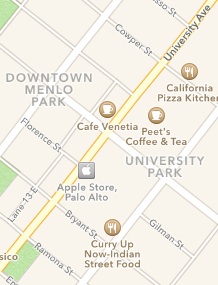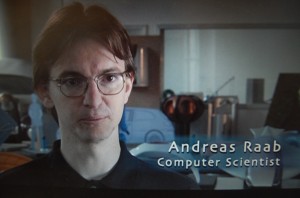I’ve created plenty of technical solutions that were demonstrably effective, yet failed to change the world because they were not integrated with the users’ personal culture (or lifestyle) and social culture (or ecosystem). For years I’ve been analyzing these connections on this blog, and I expect I’ll still be learning for years to come.
I think these interconnections ought to be part of the current national discussion that follows this week’s latest mass shooting.Yesterday, a parent at our son’s school wrote to the elementary school list inviting parents to join a gun protest in our little suburban downtown. When asked, I told my wife I didn’t want to go — that I felt deeply but that I didn’t know what I wanted to accomplish by protesting. “Shut up. You’re going,” she said. I ended up talking with a lot of people, and I feel I learned something.
Almost everyone seems to feel that it is now time to break away from our usual daily concerns to focus for a while on what the hell we’re going to do about this. It’s time. No one knows exactly how, but people want to help. They want to have a conversation. There’s a great overwhelming need for people to try to understand what it is that they think. To form an opinion. To accomplish some sort of effective change, because things are not ok, and our failure to address gun violence is no longer acceptable.
There also seems to be consensus that there are at least three components to the lethal events we are seeing:
- the availability of a guns — i.e., a technical tool
- an individual but widespread attachment to violence — i.e., a personal culture
- an inadequate mental health system — i.e., our social ecosystem
My own views are still evolving, but I’m starting to collect some strongly held beliefs:
- It’s best to address all of these in a comprehensive way. Leaving out any of the three elements may lead to failure.
- We are becoming increasingly dependent on medicating children and relying on schools to monitor their mental health. This appears to create a problem as young men leave the school system.
- Many people, almost always men, are drawn to a culture that celebrates violence for its own sake and as a means of settling issues. People are drawn to gore, bullying, and destruction. Most of us effected don’t act on such impulses, but I know that when I feel wronged and powerless, even my presumably healthy mind is constrained by only the thinnest of lines. Movies, music, video games, and advertisements celebrating aggression are either causes or effects of this culture. Maybe both. So are some sports, business, and political cultures. It is absurd to attack some of these potential sources of a culture-of-violence, without also considering the effect of gun fetishism itself. And I believe in shedding light on dark corners, but can we do this without making the killers famous? Please?
- Guns are a hugely powerful force multiplier. When used as directed, the meekest can be lethal to many in just moments. We send out soldiers and policemen with assault rifles, shotguns and handguns — not swords, knives, or machetes — precisely because they are so effective. It is absurd to not consider having at least the same controls on the deployment or exercise of guns as we have on explosives, poisons, automobiles, radios, drugs good and bad, home ownership, bank accounts, marriage licenses, driving while black, or working while brown.
There are may things I still don’t understand. For example, I’m ignorant of what factors are driving the increasing medication of children or using schools for monitoring and assessment instead of for education. I don’t understand why so many people stopped to thank us for protesting. Most were parents or grandparents. Quite a few, like the retired Connecticut State Trooper who spoke almost randomly with us for an hour, were not for gun control per se. But all those who walked up or leaned out their cars to thank us seemed to feel that it was desperately important to be doing something, and they seemed to feel that simply voicing our concerns and facilitating discussion was itself the start of doing something. People seemed to feel that their distress was not theirs alone, and that everyone should know that. By contrast, I don’t understand what some people — always older white women — were thinking when they shook their heads disapprovingly as they drove by our little protest. I don’t think these people were in favor of shooting children, but it seemed that they felt that such conversation or protest was inappropriate, or maybe beneath them. Maybe they think we were being reactionary or sensationalist. Maybe they’re right. Maybe the most important thing that I just don’t get is a sort of fundamentalist interpretation of law. Not a small number of white men, never with children in tow, and who are were clearly had never been inclined to study either law or history, were somehow fervently devoted to what they felt was intended (though not actually written) into the constitution. I’m not talking here about discussion of what is or isn’t a problem, but rather the idea that some discussion is some sort of thought-crime that must not be spoken. Several such men yelled out their car window. One walked up to us and salaciously predicted that the next massacre would surely top fifty children dead. Another got into my daughter’s face and talked about how he enjoyed killing pigs. All swore that guns didn’t kill people and the second amendment said that they could, end of story. Frankly, although I know many nice people with guns, these guys made me feel like guns are for schmucks. (Unfair, I know. But that’s what these creeps made me feel.)
Anyway, I still don’t know the answer. I think there’s plenty of opportunity for technology to help “enforce the laws we have.” (If my phone can alert security folks or disable itself when in certain zones, so can a gun.) I think we can change laws. A neighborhood watch guy suggested that we team up with people like him — who may or may or may not be “gun nuts”, but who definitely want to help protect people. The state trooper urged us to demand that sherif departments expand “D.A.R.E.”-like programs to include perhaps violence, bullying, and mental health. Campaign that Guns Are For Schmucks. The idea of taxing bullets is sounding less facetious. Or mandatory gun insurance. But let’s discuss this, and let’s not keep anything off the table.










